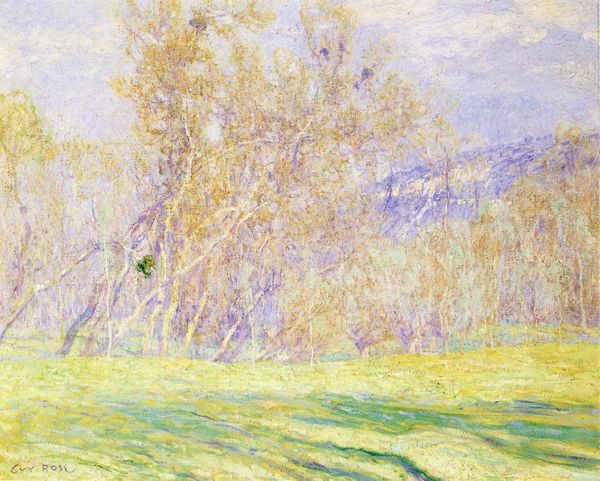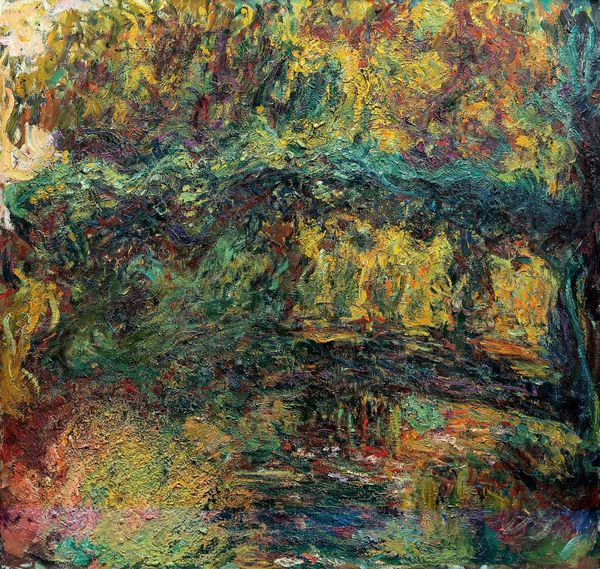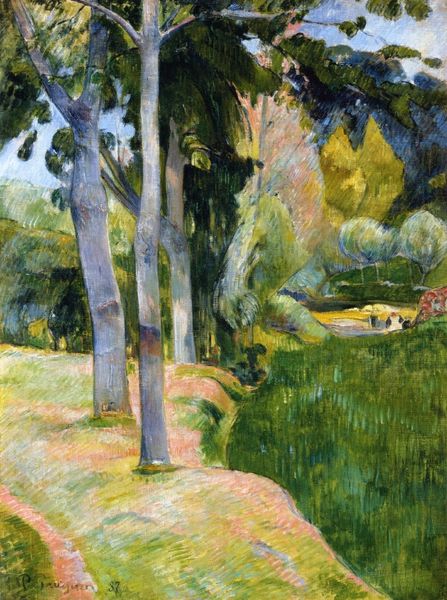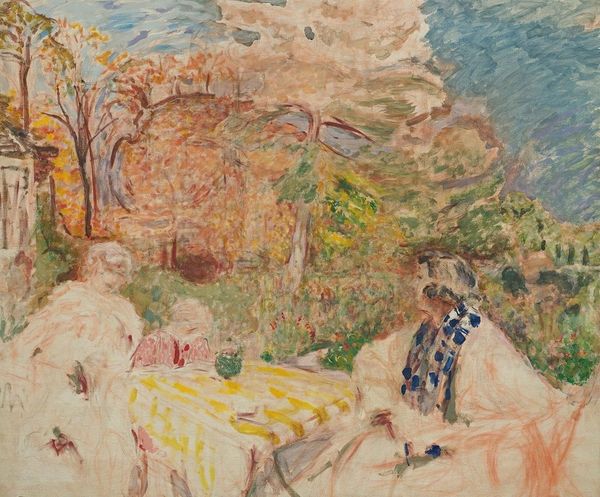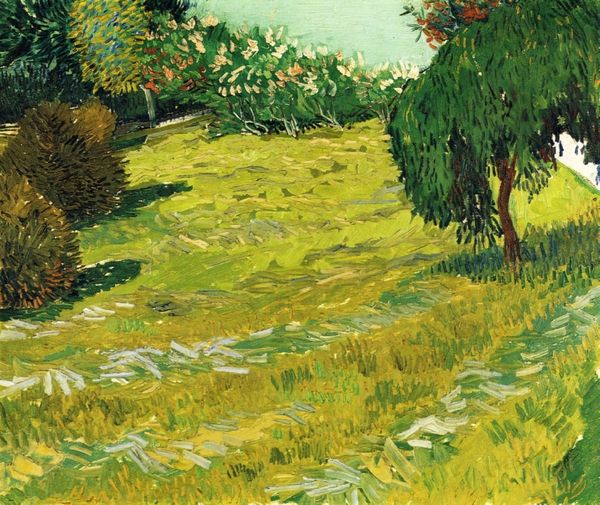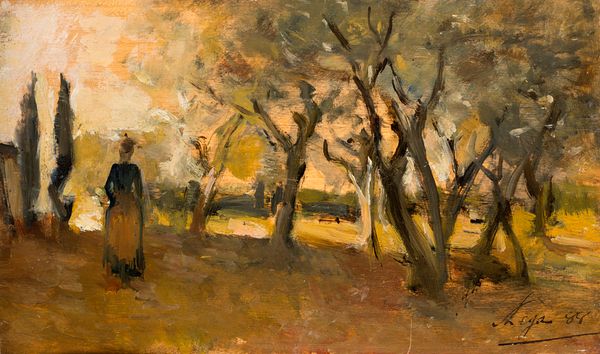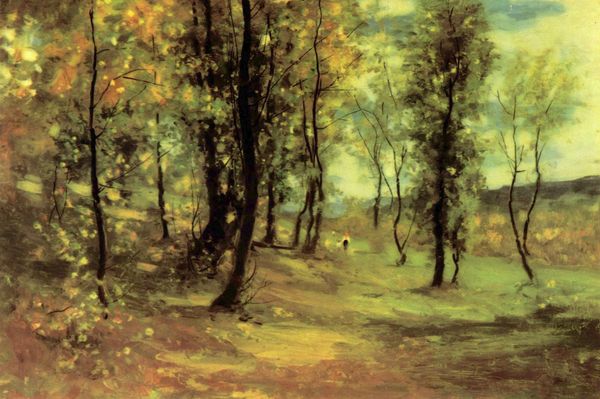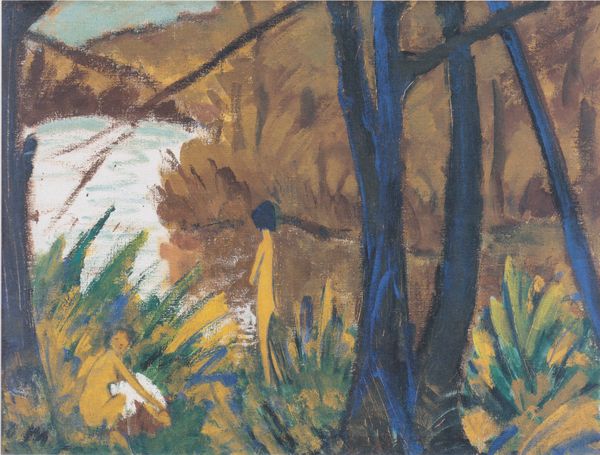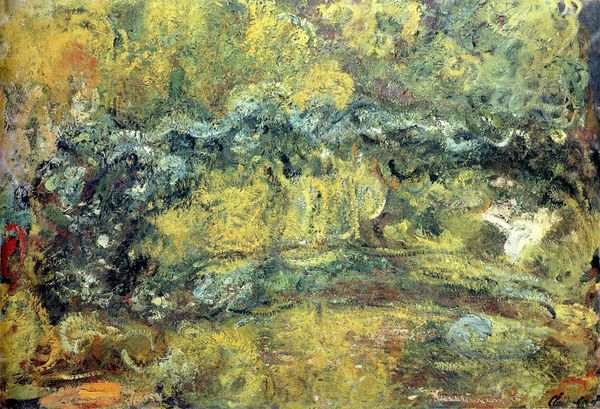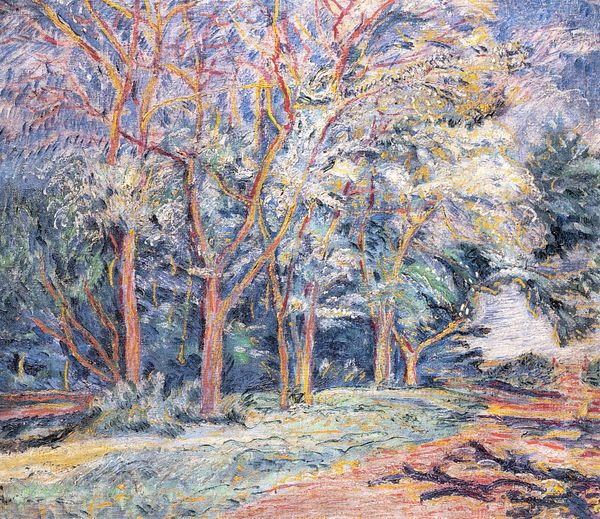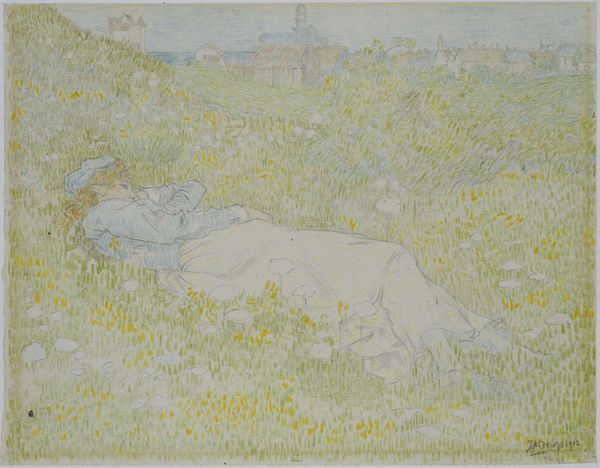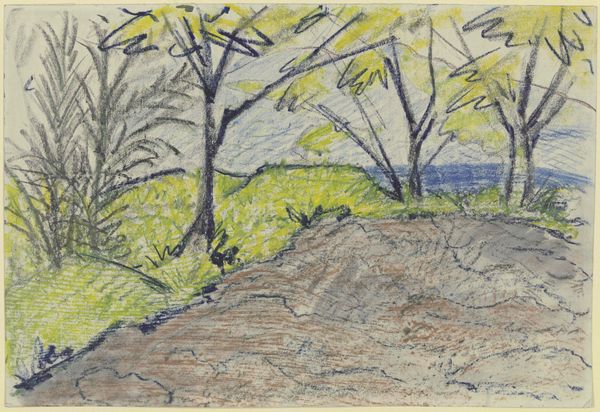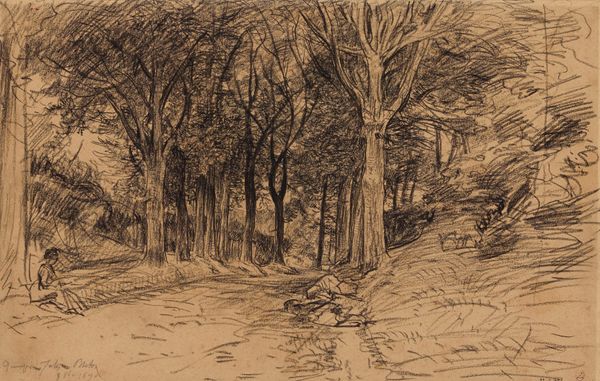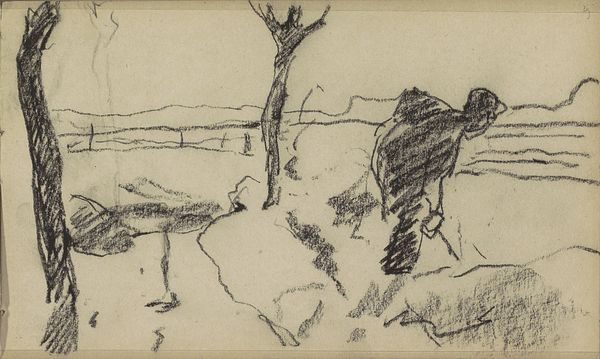
Copyright: Public domain
Curator: Childe Hassam's "In the Park," created in 1902 using pencil and pastel, offers us a glimpse into a turn-of-the-century cityscape, portraying figures enjoying a leisurely afternoon. Editor: Immediately, I’m struck by its fleeting, ephemeral quality. The hazy warmth and gentle strokes suggest a scene remembered rather than strictly observed. Curator: That's the essence of Impressionism. Beyond the formal elements, the park becomes a site of social gathering. We should acknowledge the socio-economic context that dictates who has access to these leisurely spaces. Hassam frequently depicted scenes of upper-middle-class leisure. Editor: Precisely. Notice how the artist uses short, broken strokes to capture the shimmering light filtering through the trees. The composition is rather interesting as well: the winding path creates a strong diagonal, drawing the viewer into the space, further exemplified by the positioning of the figures. Curator: This compositional choice allows the artist to convey a sense of dynamic social relations, further reinforcing the park as a space of class performance, visible through modes of dress and interactions. Editor: The pastel medium lends itself beautifully to these airy and informal studies, allowing Hassam to express a mood more so than render strict representation. It's interesting to consider how such informal representations of social life depart from traditional academic art of the period. Curator: These scenes are critical documents reflecting the complex negotiation of urban life at the turn of the century and invite us to question notions of accessibility and privilege as they persist today. Editor: Examining its forms and brushstrokes enhances our encounter, revealing its dedication to capturing light. Ultimately, it's both beautiful and quite intriguing.
Comments
No comments
Be the first to comment and join the conversation on the ultimate creative platform.
